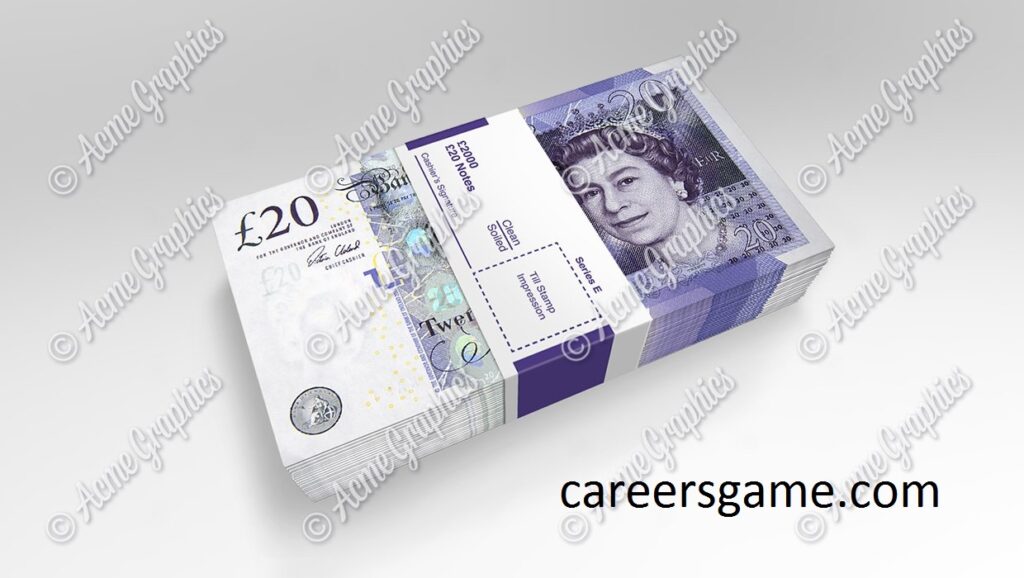Prop money plays a crucial role in the entertainment industry, especially in movies, TV shows, and advertising. It provides the illusion of real cash while ensuring the safety and legality of the production process. Whether it’s a high-stakes heist in a blockbuster film, a dramatic business deal in a TV show, or a luxury scene in an advertisement, prop money is often the unsung hero that adds authenticity to these scenarios.
The use of prop money is essential in creating a believable environment for actors and audiences alike. When handled correctly, it can enhance the realism of a scene, making it feel as though real money is being exchanged or handled. However, there are strict guidelines and regulations that govern its use, ensuring that this fake money doesn’t end up being used fraudulently. In this article, we will explore the significance of prop money, its use in different types of media, and the guidelines that ensure its safe and legal application.
The Evolution of Prop Money in Movies
In the early days of filmmaking, there were no official prop money companies or strict regulations. As a result, many productions used real currency during scenes that required money. While this added to the authenticity of the scenes, it posed significant risks. Real money could easily be lost, stolen, or damaged during production, creating financial and logistical issues for the filmmakers.
Over time, the need for safer alternatives led to the development of prop money. Initially, these replicas were rudimentary and often looked unrealistic on screen. However, as filmmaking technology improved, so did the quality of prop money. Today, high-quality prop money is virtually indistinguishable from real currency when viewed from a distance or on camera. These advancements have made it possible for filmmakers to shoot scenes involving large sums of money without the need for real cash, thus reducing risk and ensuring compliance with legal standards.
Prop Money in TV Shows
Television productions often require the use of prop money for scenes involving business transactions, gambling, or criminal activities. For instance, crime dramas and police procedurals frequently depict situations where large sums of cash are exchanged or confiscated. In these scenarios, using real money would be impractical and risky, which is why prop money is used instead.
The challenge for TV show producers is ensuring that the fake money looks convincing on screen. Since many TV shows are shot in high-definition, even the slightest detail can be noticed by the audience. Prop designers must therefore create highly accurate replicas of currency, paying attention to the texture, color, and size of the bills. In some cases, the production team will also “age” the prop money to make it look used or worn, adding to the realism.
Prop Money in Advertising
In advertising, prop money is often used to convey wealth, luxury, or success. For example, commercials for high-end products or services may feature scenes where actors handle large amounts of cash or valuable items. In these situations, prop money is essential because it allows advertisers to create an image of opulence without the need for real currency.
Moreover, in financial or investment-related advertisements, the visual presence of cash can be a powerful tool to communicate trustworthiness, prosperity, and abundance. Prop money serves as a symbolic representation of financial success, helping advertisers to establish a connection with their target audience.
Prop money in advertisements doesn’t need to look as detailed as it does in movies or TV shows since the focus is usually on creating a general impression rather than providing a close-up view. However, it still needs to look convincing enough to sell the image of wealth to the viewer.
Legal Guidelines and Regulations for Prop Money
Prop money is highly regulated due to the potential for fraud if it falls into the wrong hands. To prevent prop money from being used as counterfeit currency in real-world transactions, there are strict guidelines that must be followed in its design and production.
The U.S. Secret Service, for instance, has established specific rules for the creation and use of prop money. According to these guidelines, prop money must be distinctly different from real currency in size, color, and texture when viewed up close. In addition, the design of the bills must include clear disclaimers, such as the words “For Motion Picture Use Only” or “Prop Money,” to ensure that they cannot be mistaken for genuine currency. These markings are usually subtle enough to be invisible on camera but are clearly visible when the prop money is examined closely.
Other countries have their own laws regarding the use of prop money. In some cases, productions may need to seek permission from local authorities before using prop money on set, especially if it closely resembles the local currency. Failure to comply with these regulations can lead to legal consequences, including fines or criminal charges for counterfeiting.
The Importance of Professional Prop Money Suppliers
To ensure that prop money meets legal standards and looks convincing on screen, many film, TV, and advertising productions rely on professional prop money suppliers. These companies specialize in creating high-quality replicas that adhere to legal requirements while providing a realistic appearance for use in various media.
Professional prop money suppliers offer a wide range of options, from small amounts of cash for simple scenes to large quantities of money for more complex productions. They also provide customization services, allowing filmmakers to create fictional currencies or design prop money that fits the specific needs of their production.
Working with a reputable supplier not only ensures that the prop money looks authentic but also helps to avoid legal complications. Reputable suppliers are familiar with the regulations surrounding prop money and can provide guidance on how to use it safely and legally in a production.
Conclusion
Prop money plays a vital role in creating realistic and immersive experiences in movies, TV shows, and advertising. Its use allows filmmakers and advertisers to depict scenes involving cash without the risks and complications associated with using real money. As the entertainment industry continues to evolve, the demand for high-quality prop money will remain strong, especially as visual standards in media continue to rise.
The role of professional prop money suppliers cannot be understated, as they provide the expertise needed to ensure that the prop money used in productions looks convincing while complying with legal requirements. As long as filmmakers and advertisers continue to push the boundaries of storytelling and visual representation, prop money will remain an indispensable tool in their creative arsenal.



